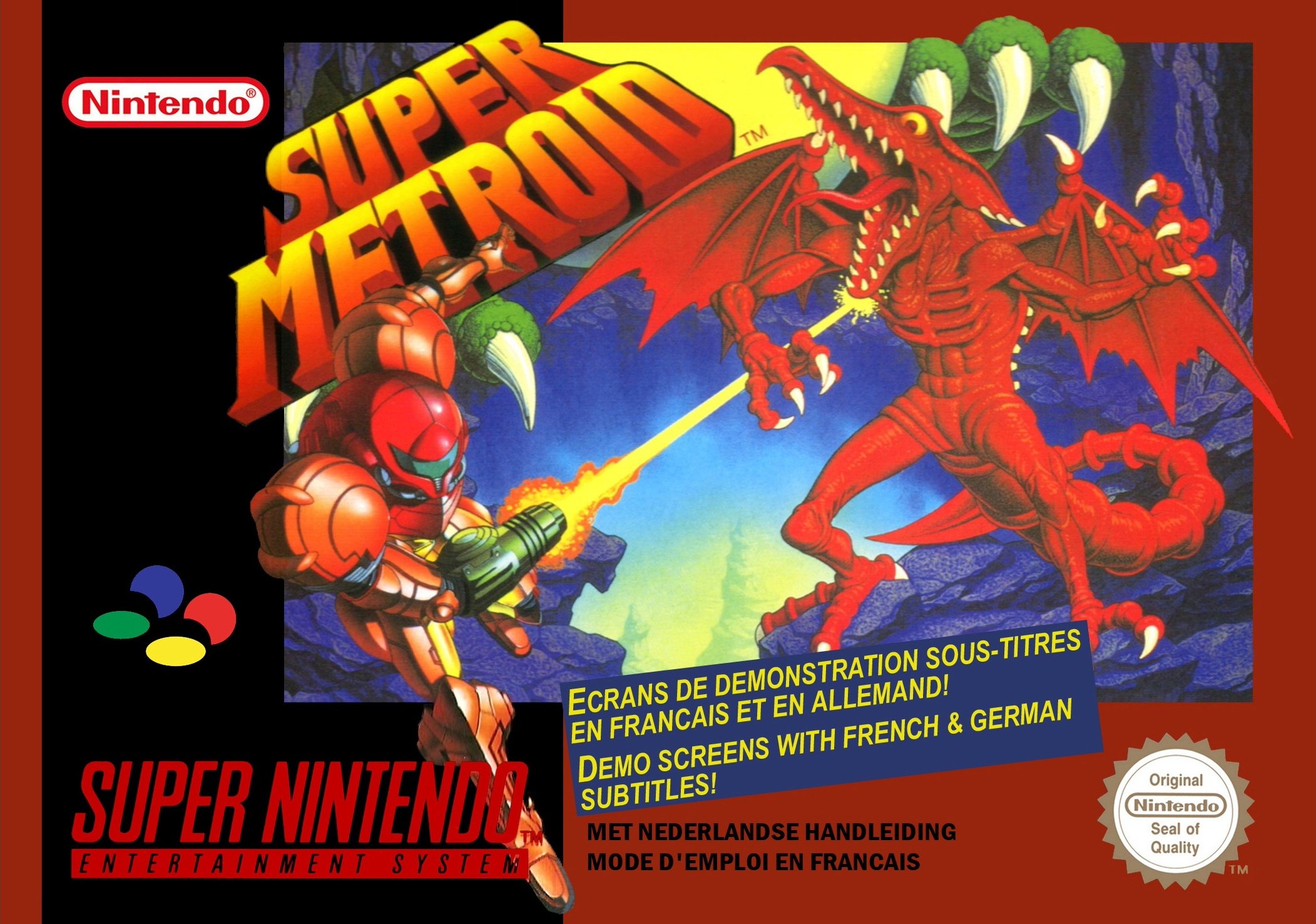
SUPER METROID
Super Metroid, released for the SNES in 1994 by Nintendo, is a landmark in gaming history and a defining title of the action-adventure genre. Seamlessly blending atmospheric exploration, non-linear gameplay, and cutting-edge visuals, Super Metroid set new standards for storytelling and design in video games.
The game’s visual design is a masterwork of 16-bit artistry. Set on the alien world of Zebes, each area is meticulously detailed, from the lush greenery of Brinstar to the molten depths of Norfair and the haunting ruins of the wrecked ship. The environments are richly layered, with parallax scrolling and atmospheric effects like steam and flowing lava creating a sense of depth and immersion. The color palette is carefully chosen to reflect the tone of each area, with dark, muted tones dominating the eerie caverns and vibrant hues highlighting more dynamic zones.
Samus Aran, the game’s iconic protagonist, is brought to life with detailed animations that reflect her agility and power. Her movements, from running and jumping to firing her arm cannon and rolling into her morph ball form, are smooth and responsive. The enemies, ranging from alien fauna to massive bosses like Kraid and Ridley, are equally detailed and animated with distinct behaviors, making every encounter feel unique and memorable.
Exploration is the heart of Super Metroid. The game’s non-linear design encourages players to navigate its interconnected world, finding upgrades that expand Samus’s abilities and unlock new areas. Power-ups like the Morph Ball, Grapple Beam, and Screw Attack not only enhance gameplay but also introduce new visual and mechanical dimensions to the world. The progression is seamless, with environmental storytelling and clever level design guiding players without overt direction.
The game’s narrative unfolds subtly, with minimal dialogue but powerful visual cues. From the opening sequence, where Samus investigates the space station and encounters Ridley, to the climactic showdown against Mother Brain, the story is told through the environment and action. Moments like the destruction of a glass tube to access a hidden area or the emotional ending with the Baby Metroid showcase the game’s ability to convey depth without words.
The soundtrack, composed by Kenji Yamamoto and Minako Hamano, is integral to the game’s atmosphere. The haunting melodies of Crateria and the intense themes of boss battles create an emotional resonance that complements the visuals and gameplay. Sound effects, such as the hum of Samus’s energy beams and the screeches of alien creatures, are crisp and immersive, enhancing the sense of danger and discovery.
Super Metroid’s technical achievements are also worth noting. The game’s large, seamless map, dynamic lighting effects, and intricate animations push the SNES hardware to its limits. The smooth transitions between areas and the fluidity of the gameplay demonstrate the developers’ mastery of the console.
In conclusion, Super Metroid is a masterpiece of 16-bit gaming, blending atmospheric visuals, engaging gameplay, and emotional storytelling into an unforgettable experience. Its influence is still felt today, and it remains a benchmark for how games can combine artistry and design to create immersive, timeless adventures.

